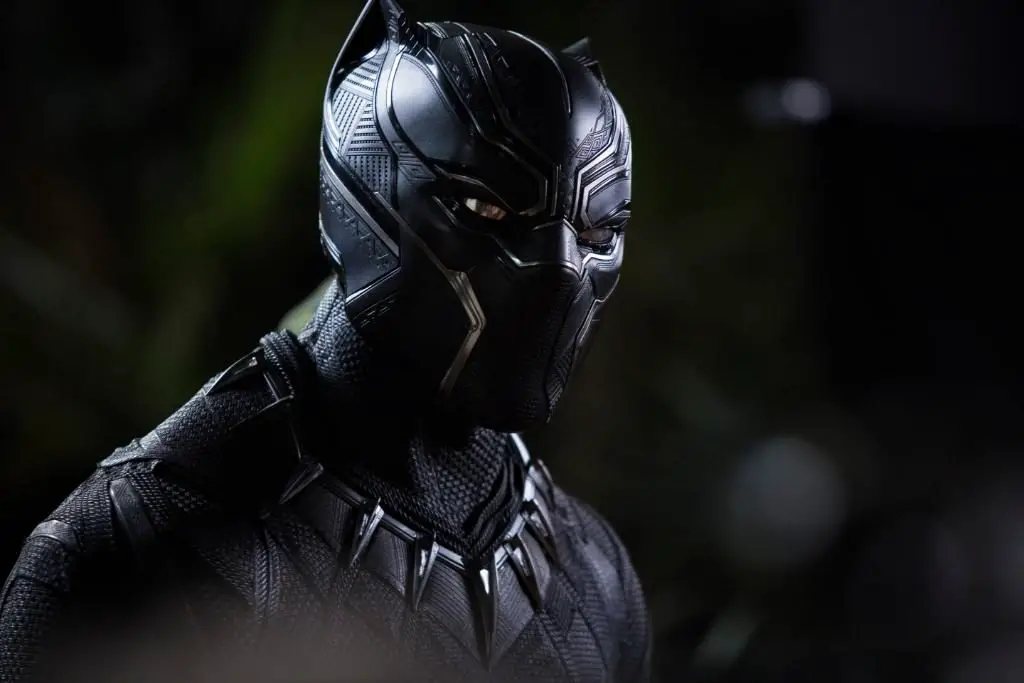Marvel’s Black Panther has made the impossible, possible. It has managed to overshadow its mega-budget follow-up and pique the interest of millions across the globe. Avengers: Infinity War is, unquestionably, the biggest cinematic event of this decade. There’s no stopping its hype ever since its first trailer dropped in November. However, this eighteenth installment in the Marvel canyon directed by Ryan Coogler has succeeded in stealing the limelight.
Black Panther is a groundbreaking film that stands next to Richard Donner’s Superman, Sam Raimi’s Spiderman 2, and Chris Nolan’s Batman Begins. It’s a superhero epic that is distinctive than rest of the comic book films. It not only subverts the genre but also shatters multiple Marvel stereotypes (including fixing the villain problem).
The character first appeared in comics in 1966 and it took the Wakandian King more than 50 years to get his own film. With Black Panther, its history in making as this afrofuturistic adventure has become the first blockbuster to be written, acted, and directed by black artists that marks the beginning of black artists taking center stage in mainstream entertainers.
What makes Black Panther so good?
The film highlights real-world struggles of the black people who have been oppressed by the colonist societies for decades. Unlike other superhero films that offer style over substance, Black Panther tells an important story of a profoundly advanced country that has remained hidden for generations in the hope to help the world without actually reaching out to its descendants in need. The film raises questions whether it’s right for a King to protect his people and operate from the shadows or help everyone outside of their landscape risking their own confidentiality.
The solid writing gives rise to one of the best origin stories ever told in and out of the MCU. Regardless of being the eighteenth installment, Black Panther is a standalone film that works for everyone. There is no need to do any homework before seeing this film. It underlines the powerful women living in the African societies and gives us a memorable bad guy in the form of Michael B Jordan’s Killmonger. Like Hiddleston’s Loki, Killmonger has meaningful intentions behind his hatred for Wakanda and its people that saves him from being another cardboard villain.
The women are equally competitive who often act as scene stealers. Danai Gurira as Royal Guard Okoye and Lupita Nyong’o as Spy Nakia deliver terrific action beats. Letita Wright charms as the tech genius who can give Tony Stark a run for his money.
All of her scenes lend the film incredible energy and enthusiasm.
And the film is nothing like anything you have seen before. The astounding production (hats off to Hannah Beachler) and vibrant costumes makes Black Panther largely distinctive from other Marvel films. Oscar nominated Rachel Morrison’s cinematography, Kendrick Lamar’s fantastic score, and the hard work of thousands of VFX artists bring alive the spirit of Wakanda.
Where does it falter?
The film primarily stumbles in transition from the second act to third act. At 2 hours and 15 minutes, the film could have been slightly longer and benefitted from 5-10 minutes of additional footage to fix its pacing issue. The less time given to Michael B Jordan’s Killmonger is also vexing considering how good he is in the film. He surely gets a bigger part than Andy Serkis’ Klaue. But Serkis kicks more ass and leaves a better impression than him.
The IMAX difference
Black Panther has some of the coolest set pieces ever seen in cinema. From a thrilling car chase set in South Korea to the neon-lit Vibranium Mountain, the action is watchable on loop for hours. Its impact is propelled by IMAX. There are plenty of scenes that warrant the big screen experience. Having seen the film both in general 3D and IMAX, there is a significant difference to be acknowledged.
While all the night sequences are blurry in general 3D, on IMAX they are incredible to look at. The aspect ratio keeps changing throughout the film to render a sense of awe and wonder when the big moments arrive. And it’s fun to enjoy those massive sequences. The intensity of hand-to-hand combat scenes staged on a giant waterfall gets escalated naturally on IMAX. Anyone who can afford to watch Black Panther on IMAX shouldn’t opt for any other format.
Post-credits and impact on Avengers: Infinity War
Black Panther has two post-credit scenes. The first one comes right after the cool end titles (which is unmissable) while the other comes after the numbering. It is not necessary to sit through the entire credits for the second one considering it’s very predictable and doesn’t have much impact on the future events.
For Infinity War, there are some big reveals that are sure to please everyone. The introduction of War Dogs, the fascinating technological advancement, and the return of a key character adds to the craze for the mega ensemble. Since the battle in next Avengers is to take place in Wakanda, it will be enthralling to see T’Challa and his men join hands with Earth’s mightiest heroes.
Rating: 4.5/5
Have something to share with our readers? Thoughts on a film you saw recently; an obscure piece of film trivia; or a film you just finished watching and can’t seem to get out of your head? Head over to our Submit section for details and shoot us a mail at [email protected].
Follow @flicksidem and our Facebook channel for more updates!

